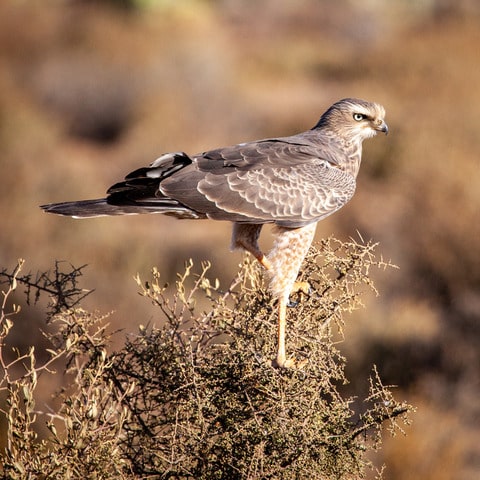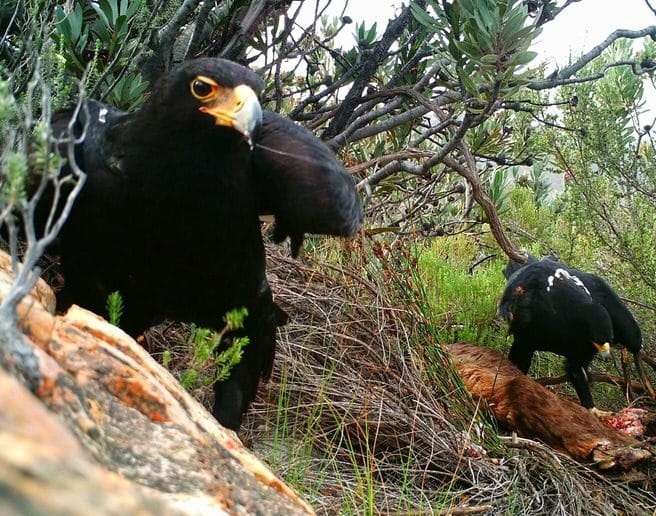Birdwatching
at Inverdoorn
Private Birdwatching Safaris & Tours
With around 850 native bird species, South Africa is a prime birdwatching safari destination and Avitourism hotspot for birding enthusiasts all over the world. And, with incredible wildlife reserves home to Africa’s iconic Big Five animals, luxurious safari lodges, and incredible city and beach adventures, it makes for an unbeatable birdwatching destination for 2024.
Inverdoorn Private Game Reserve, located only 2.5 hours outside of Cape Town, offers private birdwatching safari tours for small groups looking to elevate their South African big 5 safari experience with rare and spectacular sightings of the Karoo’s bird life.

Native Bird Species
The Karoo is home to over 205 recorded species of birds, almost a third of South Africa’s native bird population.

Private Birdwatching Safari
Led by experienced game rangers, this intimate and personalised birding safari is perfect for small groups and avid ‘listers’.

Incredible Sightings
From the Verreaux’s Eagle to the Kori Bustard, sight rare and endemic Karoo birds in their wild and natural habitat.
Inverdoorn has an exclusive birdwatching tour lined up for 2024. Led by a qualified game ranger with a lifelong passion for birding, this private birdwatching safari will take you through the heart of our wild and remote Karoo game reserve, stopping at various Karoo habitats that offer some of the best bird sightings in the Western Cape.
From the Cape’s renowned Fynbos biome to the vast semi-arid grasslands and majestic Karoo mountain landscapes, Inverdoorn’s 10 000 hectare wildlife reserve is perfect for bird enthusiasts and novice bird watchers.
Verreaux’s Eagles, also known as ‘Black Eagles’, are a spectacular and rare sighting for avid birding enthusiasts. Inverdoorn has a high concentration of Verreaux’s (Black) Eagles. The Karoo’s unique semi-desert landscape is what makes the reserve a ‘bird of prey hotspot’, with over 23 raptor species being frequently recorded, including the Marshal Eagle, Pale Chanting Goshawk, Harrier Hawk, Cape Eagle Owl, Rock Kestrel and large numbers of Lesser Kestrel in the summer months.


When birding in the Tankwa Karo, larks and chats are prominent. The Karoo Korhaan, Ludwig’s Bustard and Namaqua Sandgrouse should also be looked for. Karoo Eremomela, Namaqua Warbler (Prinia) and Pririt Batis are regional specials to be looked out for. Raptors to look out for include Booted Eagle, Pale Chanting Goshawk,
South Africa is home to around 850 species of birds. 50 bird species are endemic to the country, meaning they can only be found here. Over 700 bird species (approximately 725) are resident to Southern Africa (including annual migrating birds).
The months to visit South Africa for birdwatching is during the spring and summer months, from October through February.
During this time, many migratory bird species (from Europe, Northern Africa, and Asia) return to South Africa, almost doubling the bird populations in some areas. This time of year also marks the start of the breeding season, so many of the resident bird species are in full colour and more active, too
In our experience, the best time for birdwatching is in the early hours of the morning, just before dawn breaks. In South Africa, this is usually between 06h00 and 08h00.
Most of the birds in South Africa are diurnal, this means they’re active during the day and asleep during the night. For bird photographers and avian tourists, the best times for sighting birds are in the early morning (at dawn) and the late afternoon, when the day cools and the birds become more active as they prepare to roost for the night.
The best time for birding in South Africa and birdwatching safari tours is between October and March, when migratory birds return to the Southern Hemisphere for the summer.
However, only about 100 of South Africa’s 850 bird species migrate annually, so avid birders and those looking to see native species can still experience spectacular bird sightings throughout the year, no matter the month or season.
Yes, more than 100 migratory birds species have been identified and recorded in South Africa. This includes birds that migrate across the continent, as well as much further — between Southern Africa, Europe, and Asia.
Some of the most famous examples of birds that migrate between South Africa and Europe are: the European Stork, the European Roller, the Purple Heron, the Black-winged Kite, the European Bee-eater, and many more.
The Big 6 Birds the largest and most impressive birds you can sight in Southern Africa. Scattered in various regions and unique habitats across the country, they are: the Saddle-billed Stork, the Martial Eagle, the Pel’s Fishing Owl, the Ground Hornbill, the Lappet-faced Vulture and the Kori Bustard.
South Africa has a temperate and subtropical climate, and with an impressive habitat diversity, it’s no surprise that birds rather like it here. Whilst you can see many bird species in just about any location in the country, the most popular birding ‘hot spots’ in South Africa are:
- Kruger National Park
- Isimangaliso Wetland Park
- The Succulent Karoo
- The Drakensberg Mountains
- The Klein Karoo
- Tsitsikamma National Park
- West Coast Nature Reserve
The Western Cape has over 203 recorded species of birds. Common bird sightings in the province are:
- African Black Oystercatcher
- Cape Sugarbird
- Orange-breasted sunbird
- Cape rockjumper
- Egyptian goose
- Kelp Gull
- Malachite kingfisher
- African Black duck
- Cape Teal
- Cormorants
- Tufted Duck
- Zitting Cisticola
- Blacksmith lapwing
- Blue crane
- Cape bulbul
- Cape canary
- Cape shoveler
- Ibises
- Victorin’s warbler
- African
- Avocet
- Black Harrier
- Black-winged Stilt
- Cape spurfow
- Kori bustard
- Martial eagle
- African cuckoo
- Saddle-billed stork
- Hooded Vulture
- Tawny Eagle
- Bateleur Eagle
- Karoo korhan
- Lesser flamingo
- Southern ground hornbill
Typical raptors in the Karoo include:
- Black-shouldered Kite
- Rock Kestrel
- Verreaux’s Eagle
- Martial Eagle
- Pale-Chanting Goshawk
- Greater Kestrel
- Jackal Buzzard
- Gabar Goshawk
- Secretary Bird
- Black-chested Snake-eagle
- Booted Eagle
- Black Harrier
- Spotted Eagle Owl
- Cape Eagle owl
- White-backed Vulture
- Cape Vulture
- Greater Flamingo
- Kittlitz’s Plover
- Malachite Kingfisher
- Common Tern Roost
- South African Shelduck
- Black-winged Stilt
- Pied Avocet
Terrestrial birds are a common sight in the Karoo. they walk through open habitats, such as grasslands and savannas, preying primarily on insects, large reptiles such as lizards, snakes and chameleons, small mammals, and also plant berries and seeds.
- African Ostrich
- Kori Bustard
- Ludwig’s Bustard
- Northern Black Korhaan
- Hadada Ibis

